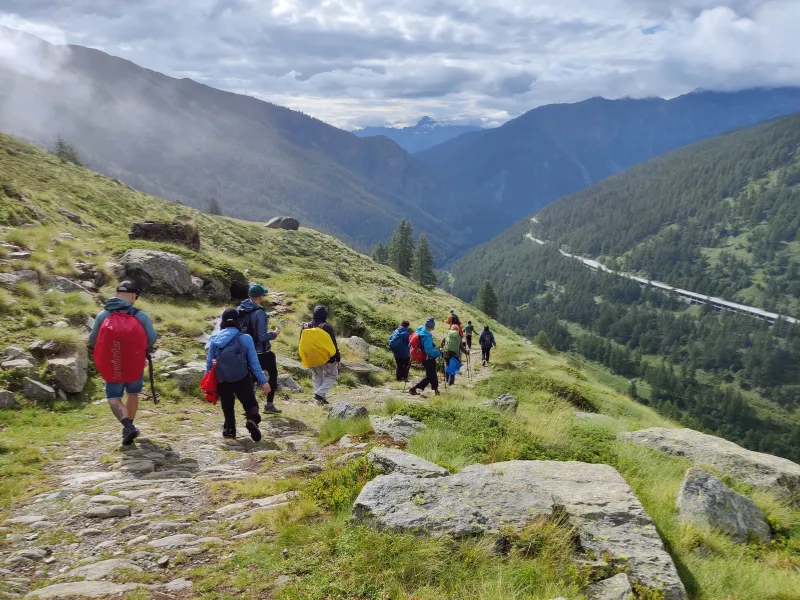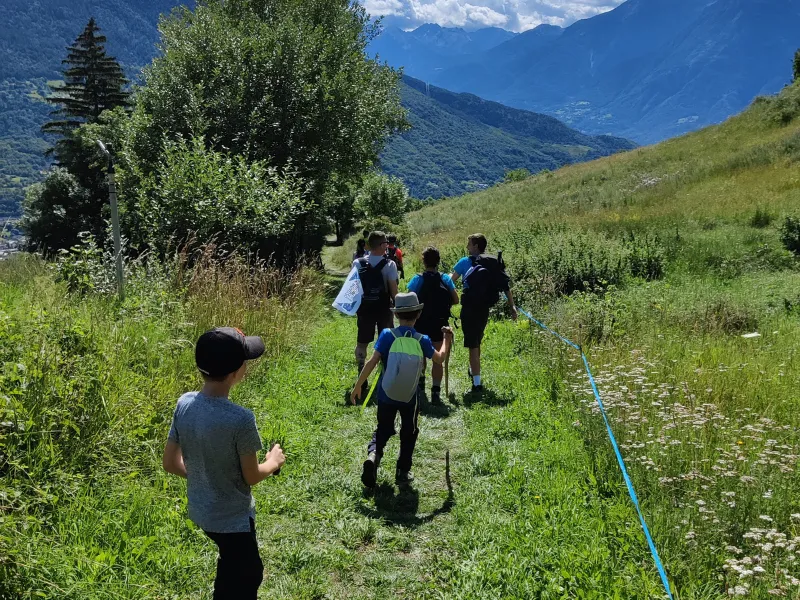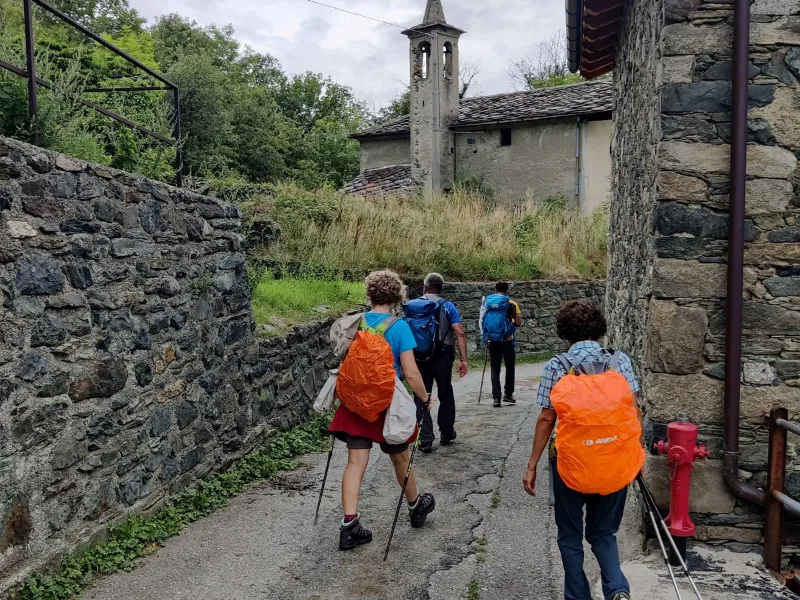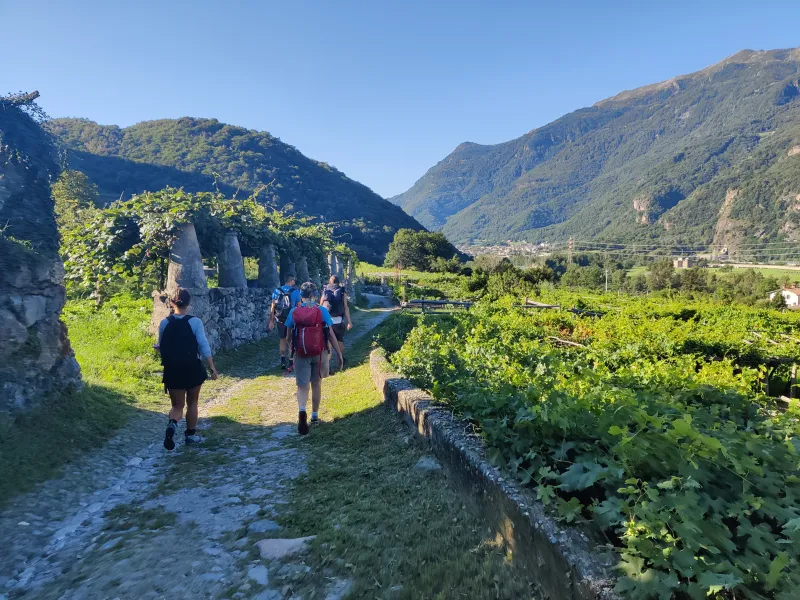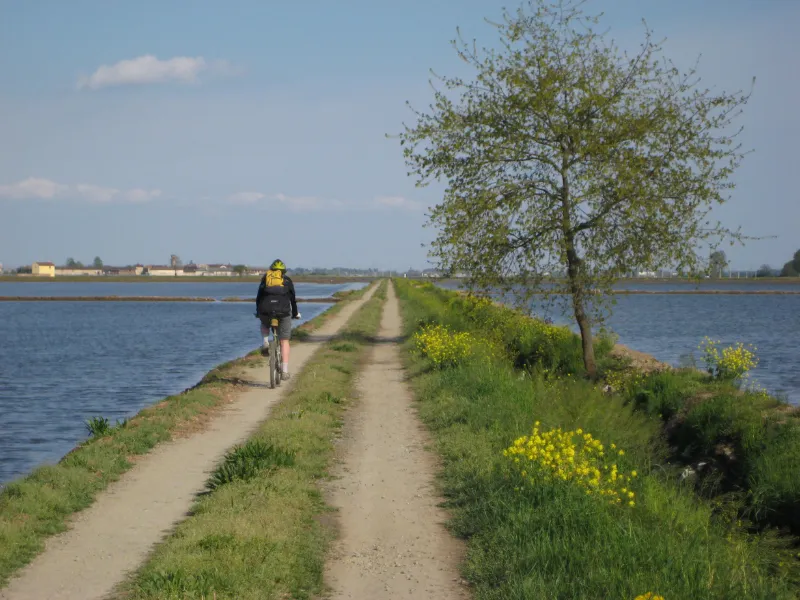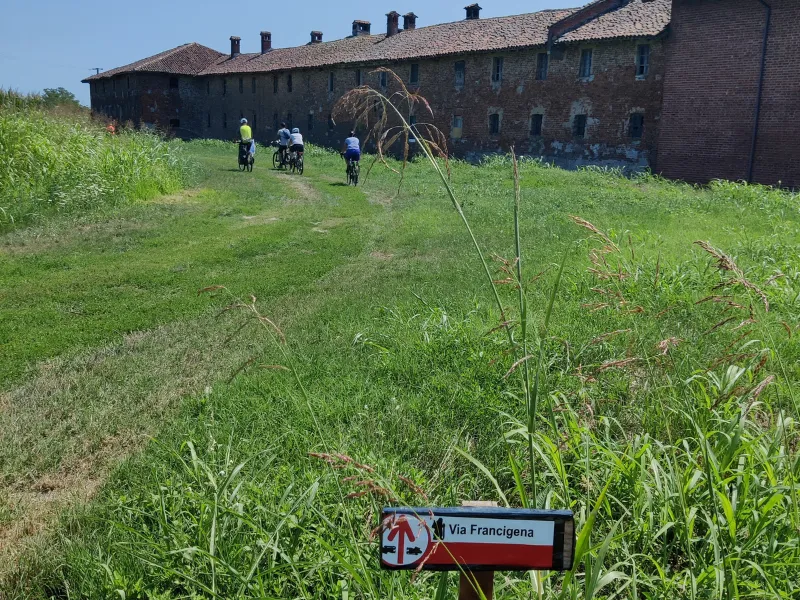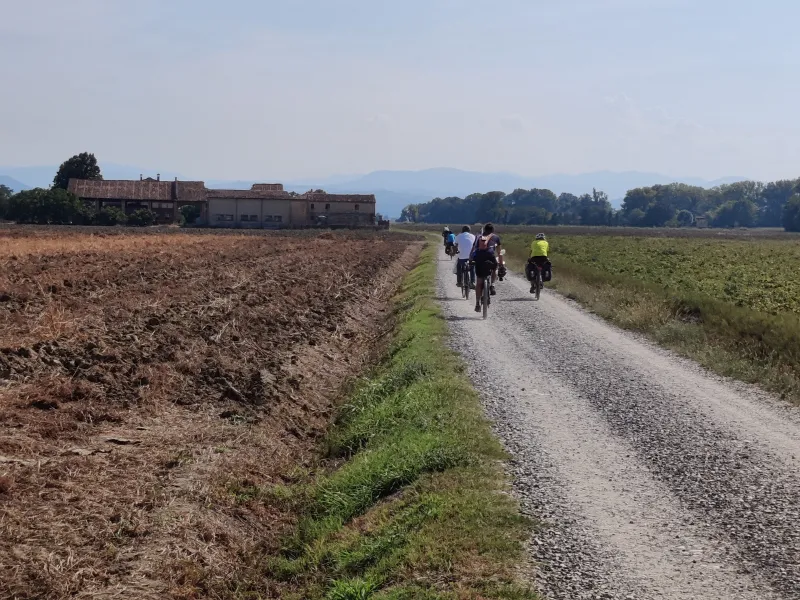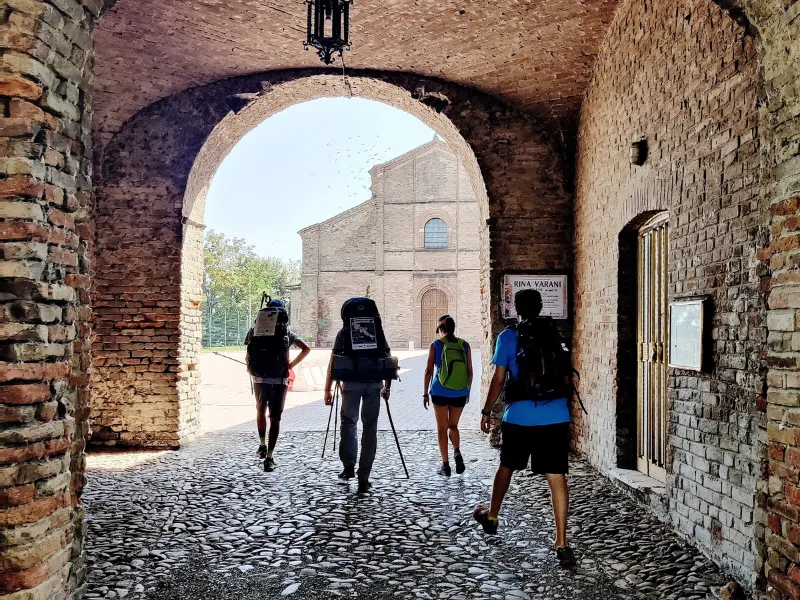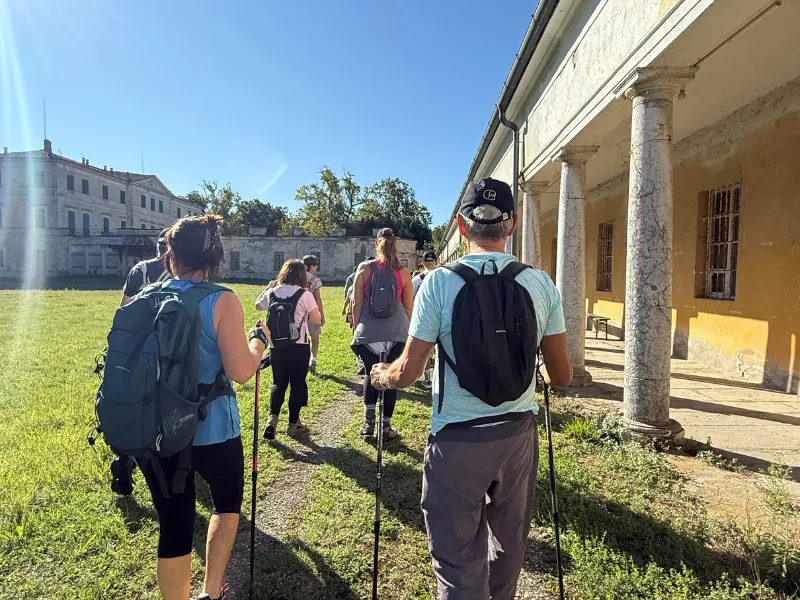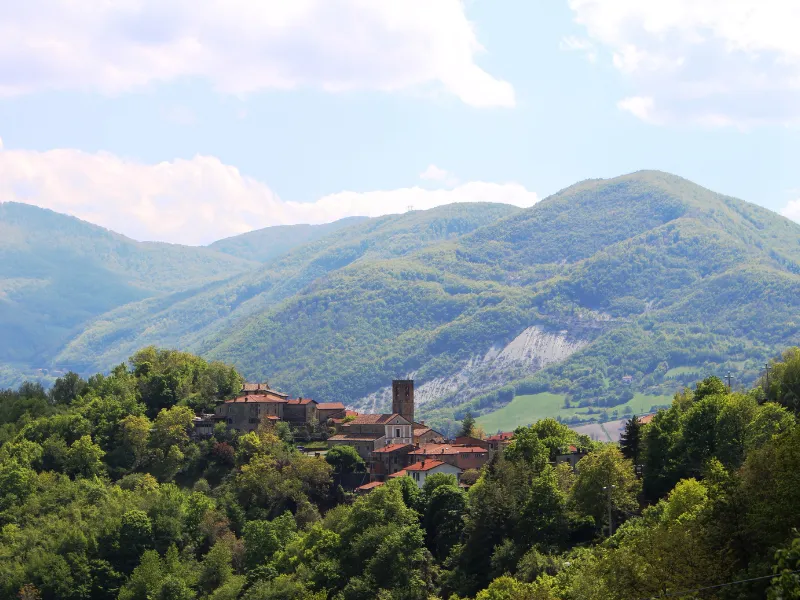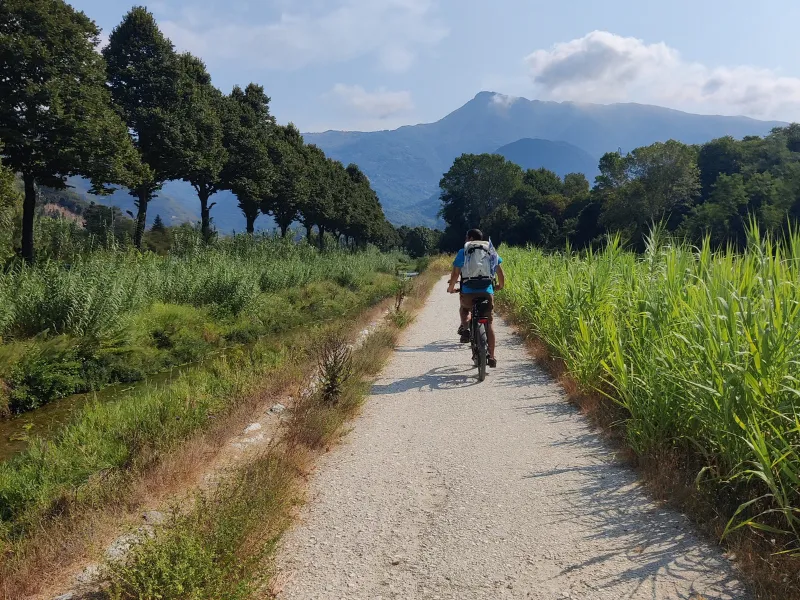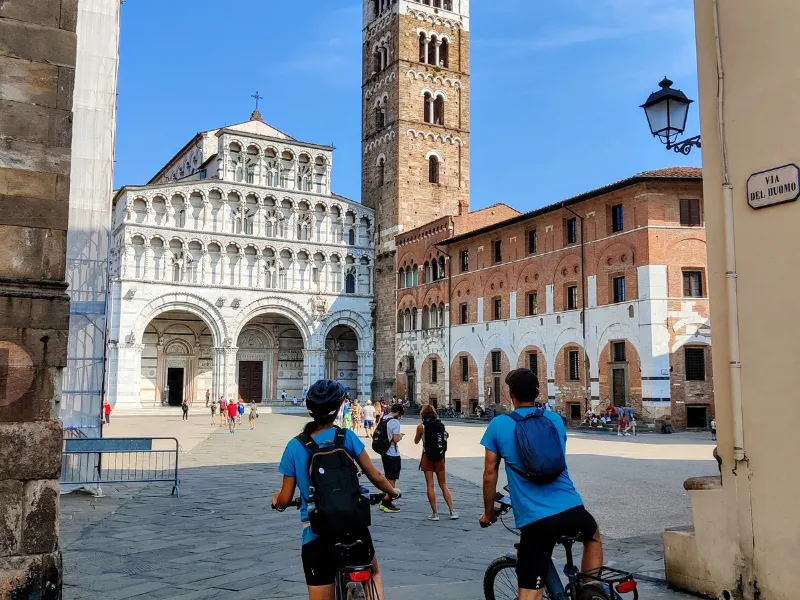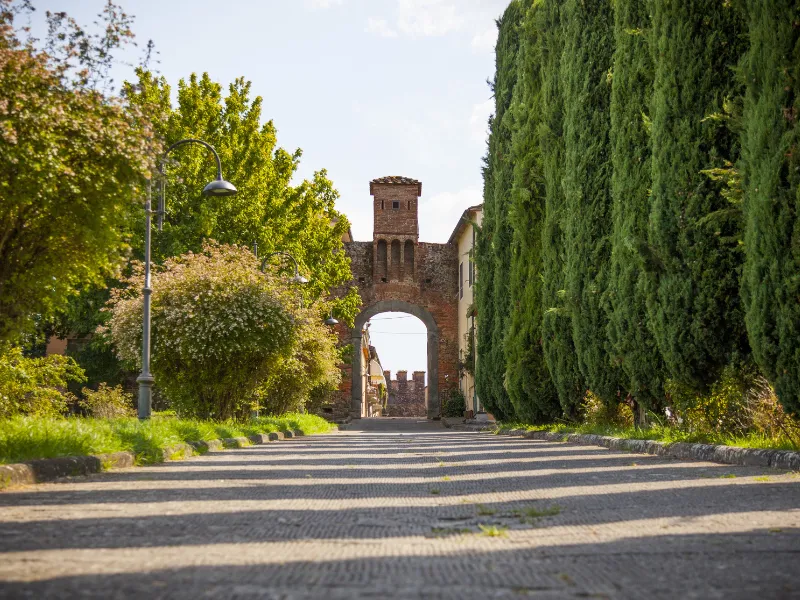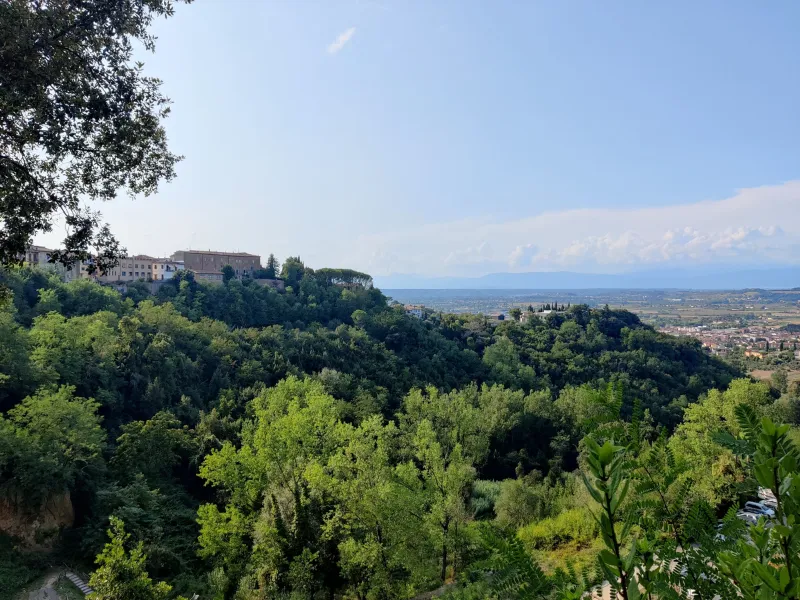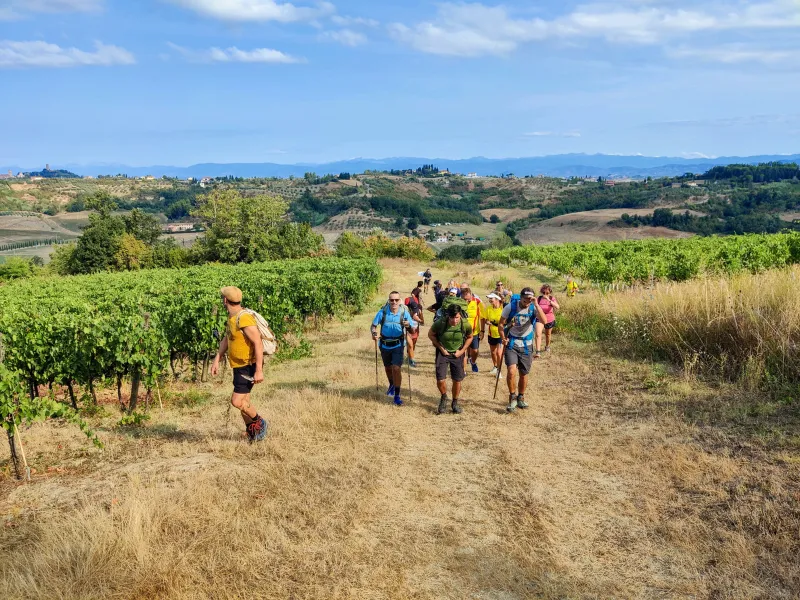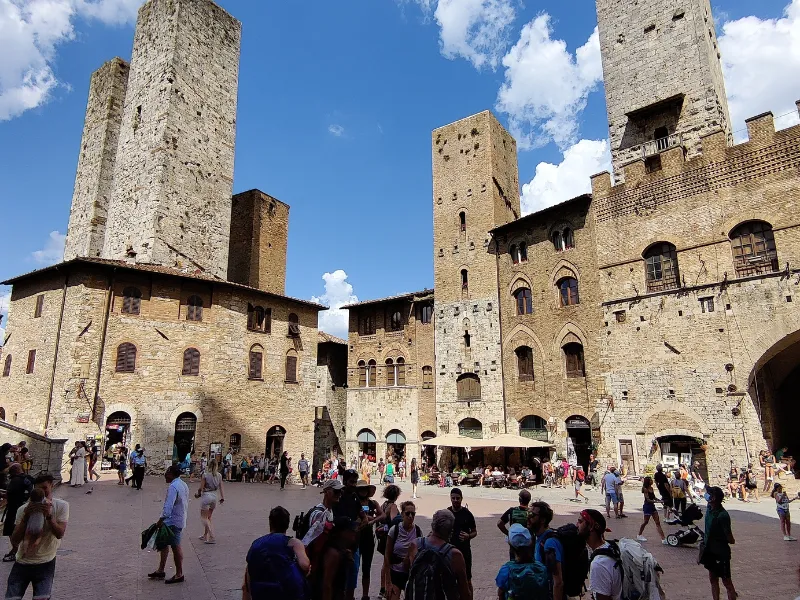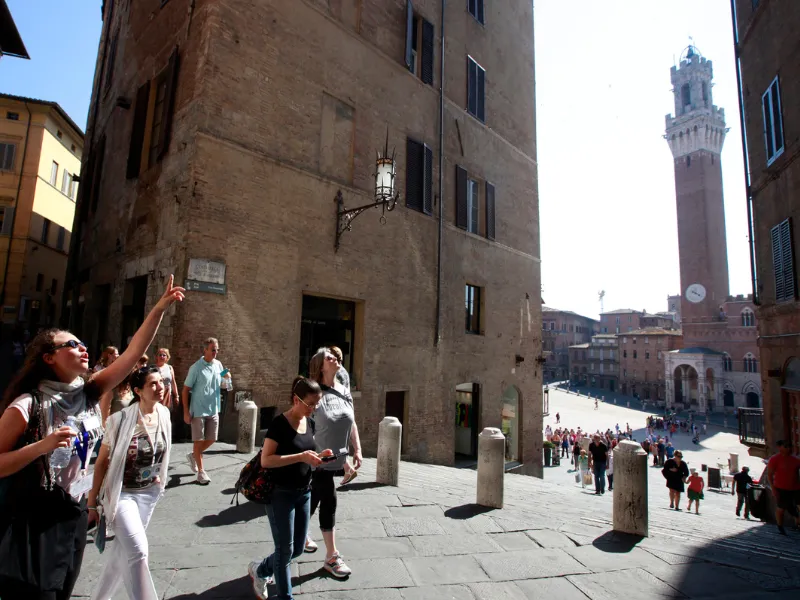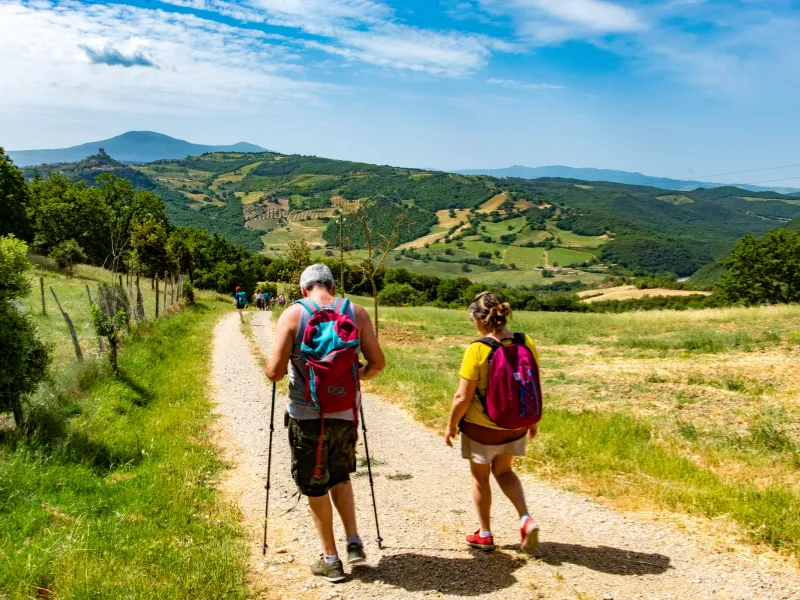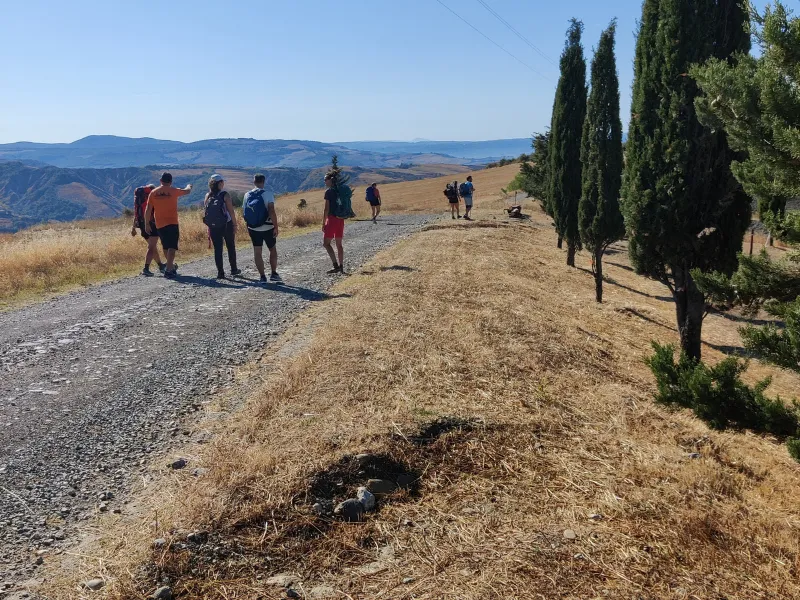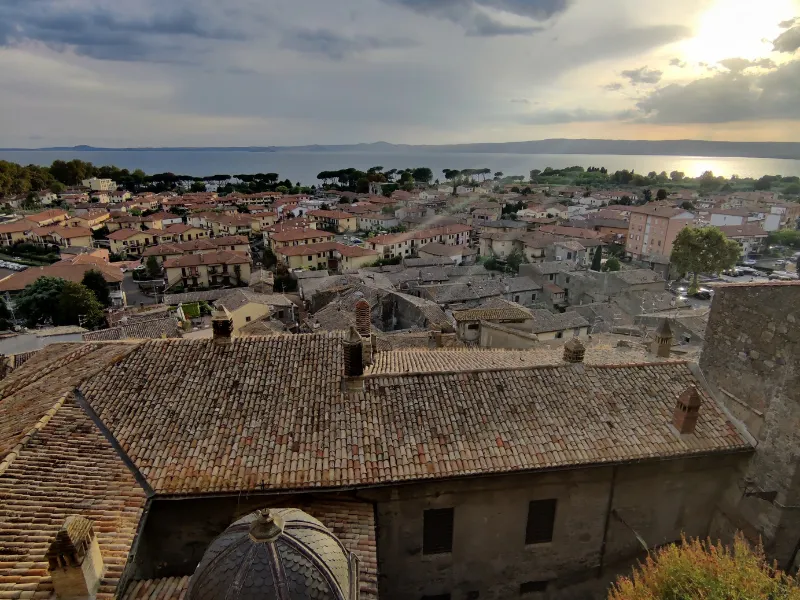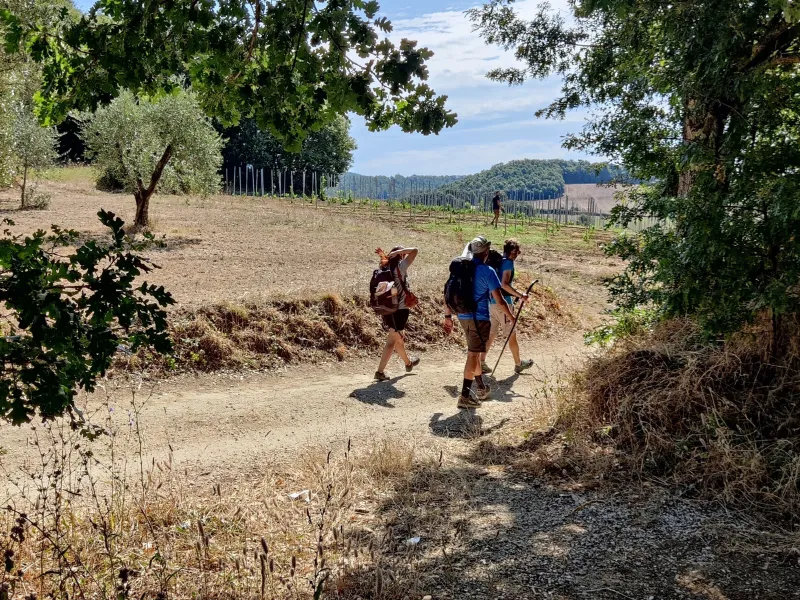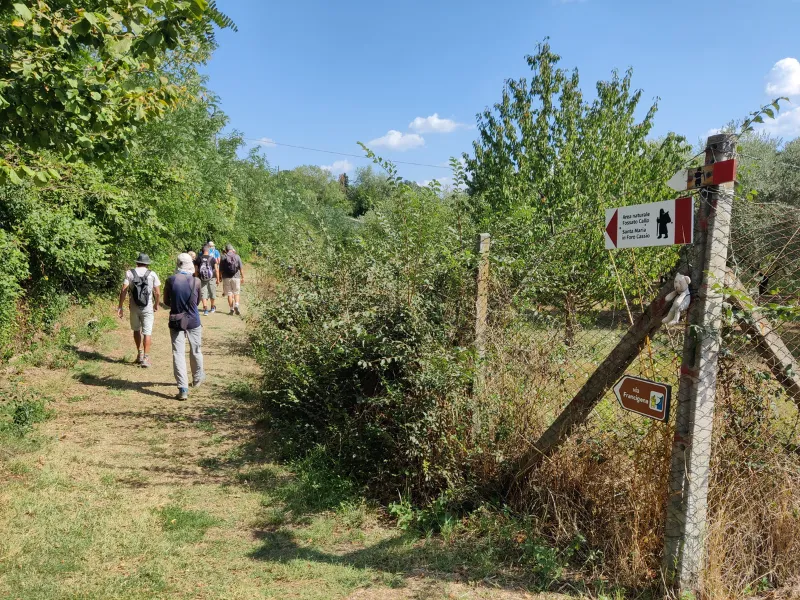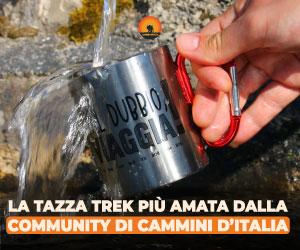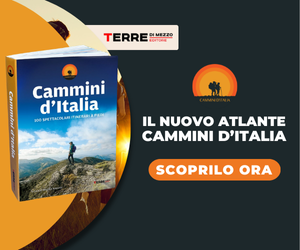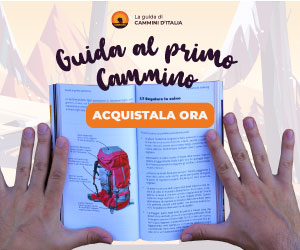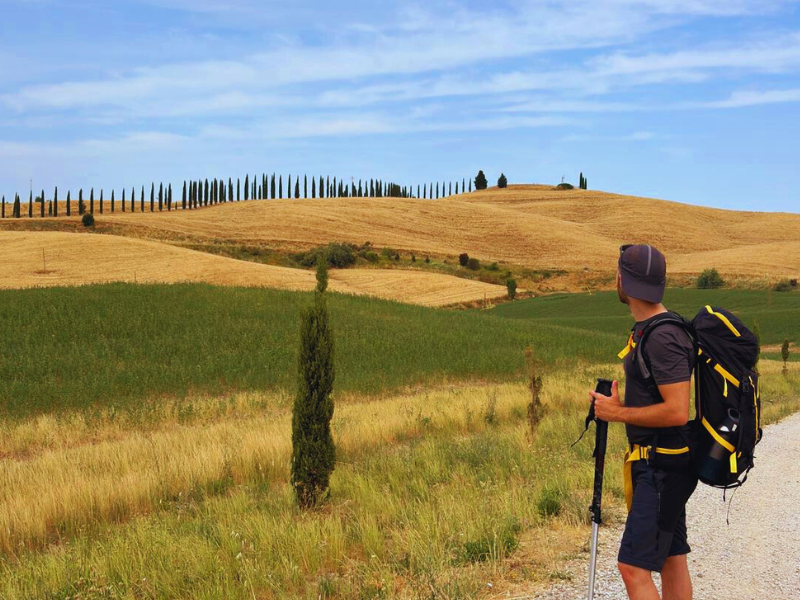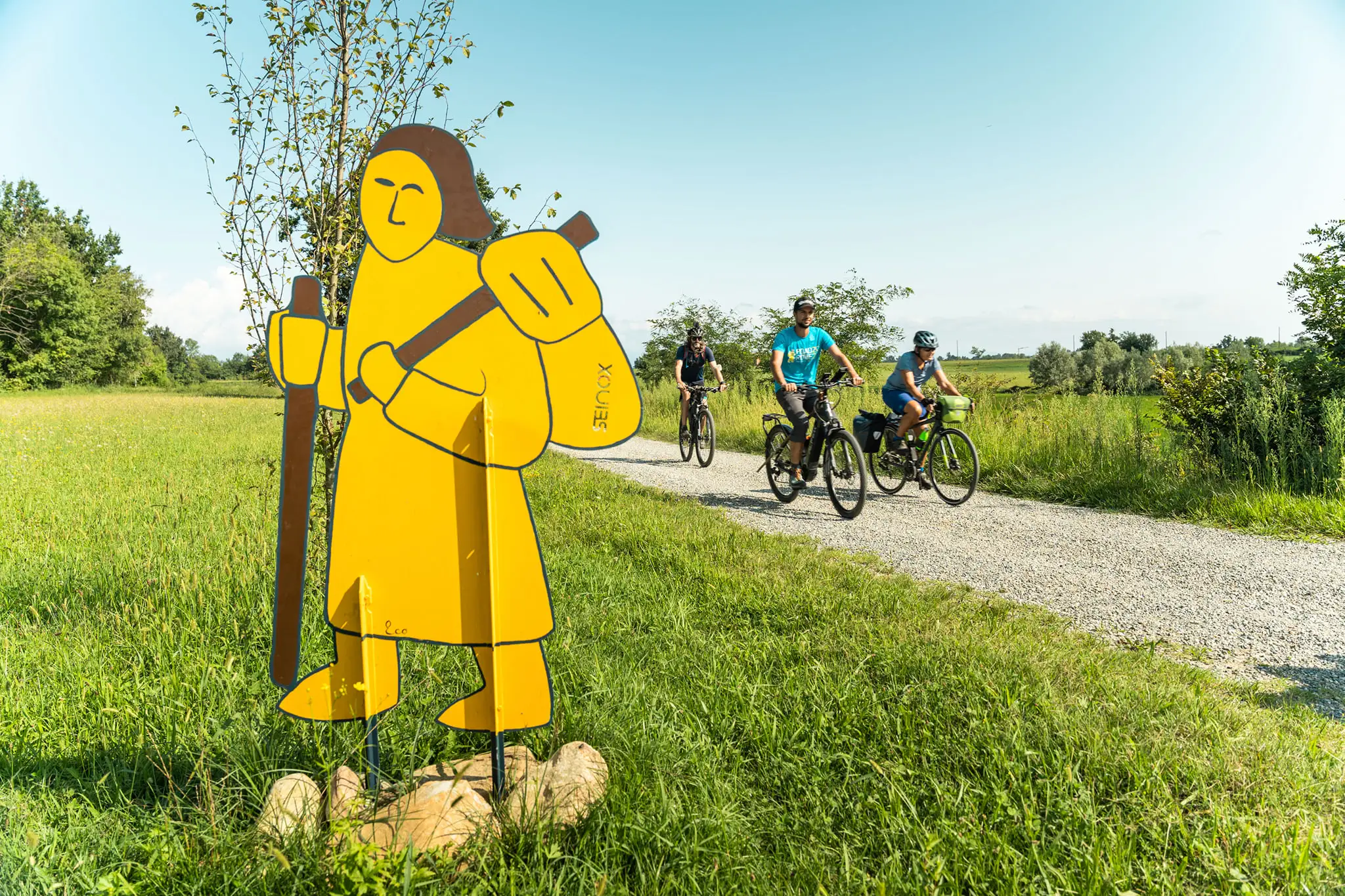
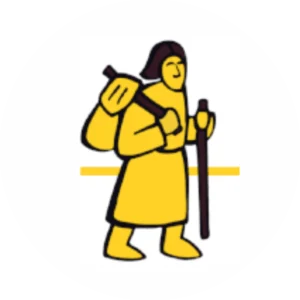
Via Francigena
3,200 km from Canterbury to Santa Maria di Leuca, crossing England, France, Switzerland, Italy and the Vatican: since 1994 Council of Europe Cultural Route.
The Via Francigena is much more than a path to be taken on foot or by bicycle: crossing 5 states, 16 regions and more than 600 municipalities, the route unites history, culture, art but also peoples and ideas. Following in the footsteps of the pilgrims who even before the year 1000 set out from northern Europe to the Eternal City, Via Francigena is a safe, easy route, free of technical difficulties, carefully designed to be walked by everyone and at all ages.
The Way starts from Canterbury in the United Kingdom and runs through Kent, the Haute-de-France, Grand Est and Bourgogne-Franche-Comté regions in France, the Cantons of Vaud and Valais in Switzerland, and the Italian regions of Valle d'Aosta, Piedmont, Lombardy, Emilia-Romagna, Liguria, Tuscany, Lazio, Campania, Basilicata and Apulia, as well as the Vatican State.
HISTORY
In the early Middle Ages, around the 7th century, the Lombards contested Italian territory with the Byzantines. The strategic need to connect the Kingdom of Pavia and the southern duchies by a sufficiently safe route led to the choice of an itinerary until then considered minor, which crossed the Apennines at what is now the Cisa Pass, and after the Magra Valley turned away from the coast in the direction of Lucca.
From here, so as not to get too close to the areas in Byzantine hands, the route continued through the Elsa Valley to Siena, and then through the valleys of ‘Arbia and Orcia, to reach the Val di Paglia and Latium territory, where the route joined the ancient Via Cassia leading to Rome. The route, which took the name “Via di Monte Bardone,” from the ancient name of the Cisa Pass, Mons Langobardorum, was not a real road in the Roman sense, nor even in the modern sense of the term.
It is mainly thanks to the travel diaries, and in particular Sigeric’s notes, that we can reconstruct the ancient route of the Francigena. In 990, after being ordained Archbishop of Canterbury by Pope John XV, the Abbot returned home, noting on two handwritten pages the 80 tasks where he stayed overnight. Sigeric’s diary is still considered the most authoritative itinerary source, so much so that it is often referred to as “Via Francigena according to Sigeric’s itinerary” to define the most “philological” version of the route.
CREDENTIAL
The Credential, or “pilgrim’s passport,” is the document on which the wayfarer receives a stamp at tourist offices, parishes, accommodation and refreshment facilities he or she encounters along the way. In addition to being a valuable memento of the experience, the credential distributed by the European Via Francigena Association offers many benefits.
AEVF
The European Association of Via Francigena (AEVF) was founded in 2001 with the aim of promoting the route certified by the Council of Europe in 1994. Currently 235 local authorities, 88 nonprofit organizations and more than 400 private entities, active in the hospitality, tourism and service sectors, join the AEVF network. The Association also manages the itinerary’s promotion channels, such as: the official website www.viefrancigene.org, social channels, a dedicated newsletter in 3 languages, the Facebook community “Via Francigena – Road to Rome”, the “Visit Vie Francigena” portal dedicated to operators and the magazine “Via Francigena and the European Cultural Routes”.
Via Francigena was certified as a “Council of Europe Cultural Route” in 1994, and the European Association of Via Francigena (AEVF) was recognized by the Council of Europe as the institutional contact for the protection and enhancement of Via Francigena in 2007. Since that time, the Council of Europe and its Cultural Routes Program have been strategic institutional partners of the Association. The main objectives of the Cultural Routes Program are related to the promotion of European identity based on a common set of values; the enhancement of intercultural and interreligious dialogue; the preservation of cultural and natural heritage as a source of social, economic and cultural development; and the promotion of cultural and sustainable tourism.
SIGNAGE
The “official” signageinstalled to date along Via Francigena is represented by:
– Metal road sign that is then installed along sections of the route where motor vehicles also pass
– Small metal sign that lends itself to installation along country roads and paths
– Yellow aluminum support on which a signpost is installed, equipped with an arrow
– White-red stickers with the black pilgrim symbol
– Paint signpost with the black pilgrim symbol.
CONTACTS
European Via Francigena Association
Piazza Duomo 16
43036 Fidenza (PR)
Email: segreteria@viefrancigene.org
Website: www.viefrancigene.org
Tel.+39 0524-517380
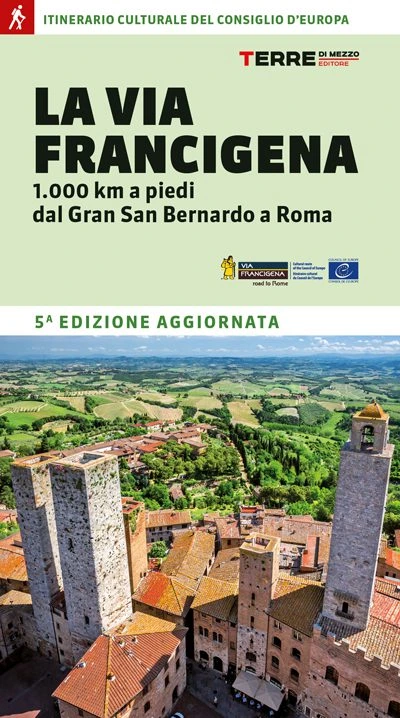
GUIDE OF THE VIA FRANCIGENA
From the Alps to Rome on foot along the route of the ancient pilgrims in the footsteps of Archbishop Sigeric (10th century). A whole month, a week or a few days: an extraordinary journey of discovery on your own or in a group, among unexpected landscapes, medieval parishes and stretches of Roman roads, passing through some of the most beautiful and evocative villages in Italy. 45 STAGES between Valle d’Aosta, Piedmont, Lombardy, Emilia-Romagna, Liguria, Tuscany and Lazio.
With all the indispensable information for setting out on the trail: detailed maps, elevations, step-by-step description of the route, official variants, where to sleep and places to visit. A guide for everyone: pilgrims, trekkers, wayfarers and for those who want to experience even short stretches along one of Europe’s most famous routes.
